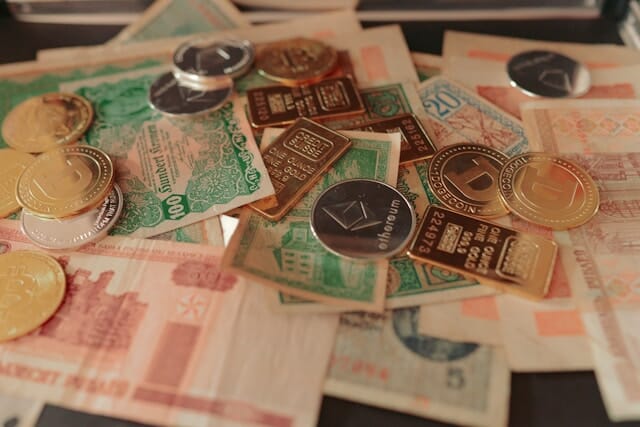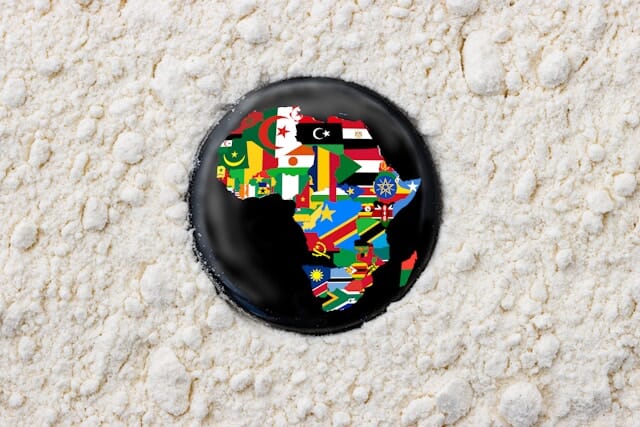In a world of economic volatility, a strong currency is more than just a number—it’s a shield against inflation, a magnet for investment, and a lifeline for consumers and businesses. As of June 2025, African nations are navigating a complex global landscape marked by trade tensions, geopolitical shifts, and inflationary pressures. Yet, some countries stand out for their robust currencies, reflecting sound economic policies, diversified economies, and strategic resource management. This blog post explores the top 10 African countries with the strongest currencies in June 2025, based on data from sources like Business Insider Africa and Forbes Currency Converter. We’ll dive into what makes these currencies resilient, their exchange rates against the U.S. dollar (USD), and how their strength impacts consumers and investors. From Tunisia’s dinar to South Africa’s rand, let’s unpack the forces driving Africa’s strongest currencies.
1. Tunisia (Tunisian Dinar - TND)
Exchange Rate: ~2.95 TND per USDThe Tunisian Dinar (TND) reigns as Africa’s strongest currency in June 2025, trading at approximately 2.95 TND per USD. Tunisia’s currency strength stems from strict foreign exchange controls, robust trade ties with Europe, and a diversified economy driven by manufacturing, agriculture, and tourism. Despite challenges like inflation (around 5.6%) and slow growth, the Tunisian Central Bank’s tight monetary policies and capital controls prevent excessive fluctuations, ensuring stability.
A strong TND keeps import costs—think electronics, vehicles, and pharmaceuticals—relatively low, easing the burden on Tunisian households. For example, a $500 smartphone costs ~1,475 TND, more affordable than in countries with weaker currencies.
2. Libya (Libyan Dinar - LYD)
Exchange Rate: ~4.82 LYD per USDThe Libyan Dinar (LYD) holds the second spot, valued at around 4.82 LYD per USD. Libya’s vast oil reserves and stringent currency controls underpin the LYD’s strength, despite ongoing political instability. Oil revenues provide substantial foreign exchange, allowing the Central Bank of Libya to maintain an artificially high exchange rate. However, global oil price swings and governance challenges pose risks.
3. Morocco (Moroccan Dirham - MAD)
Exchange Rate: ~9.17 MAD per USDThe Moroccan Dirham (MAD) ranks third, trading at approximately 9.17 MAD per USD. Morocco’s diversified economy—spanning tourism, agriculture, and renewable energy—supports the MAD’s resilience. A managed exchange rate regime, with gradual flexibility introduced by the Central Bank of Morocco, balances stability with market responsiveness. Strong EU trade ties further bolster investor confidence.
4. Ghana (Ghanaian Cedi - GHS)
Exchange Rate: ~13.20 GHS per USDThe Ghanaian Cedi (GHS) has climbed to fourth, trading at around 13.20 GHS per USD, a notable improvement from 15.46 GHS the previous year. Strong cocoa, gold, and oil exports, coupled with IMF-backed reforms, have stabilized the cedi. Monetary policy tightening and debt management have also reduced inflation pressures.
5. Botswana (Botswana Pula - BWP)
Exchange Rate: ~13.38 BWP per USDThe Botswana Pula (BWP) ranks fifth, trading at approximately 13.38 BWP per USD. Botswana’s economy, driven by diamond mining, tourism, and prudent fiscal management, supports the pula’s strength. Though tied to the South African rand, the BWP benefits from Botswana’s stable governance and diversified exports.
6. Seychelles (Seychellois Rupee - SCR)
Exchange Rate: ~13.65 SCR per USDThe Seychellois Rupee (SCR) holds sixth place, trading at around 13.65 SCR per USD. Seychelles’ tourism-driven economy and well-regulated financial sector underpin the rupee’s value. The country’s small, open economy benefits from foreign exchange earnings from visitors and offshore services.
7. Eritrea (Eritrean Nakfa - ERN)
Exchange Rate: ~15.00 ERN per USDThe Eritrean Nakfa (ERN) is seventh, fixed at 15.00 ERN per USD. Eritrea’s tightly controlled economy and fixed exchange rate policy ensure stability, though this comes at the cost of economic flexibility and foreign investment. Limited forex transactions maintain the ERN’s artificial strength.
8. Eswatini (Swazi Lilangeni - SZL)
Exchange Rate: ~18.23 SZL per USDThe Swazi Lilangeni (SZL) ranks eighth, pegged to the South African rand at 18.23 SZL per USD. Eswatini’s economy relies on trade with South Africa, sugar exports, and remittances, benefiting from the rand’s stability but lacking monetary policy autonomy.
9. South Africa (South African Rand - ZAR)
Exchange Rate: ~18.13 ZAR per USDThe South African Rand (ZAR) is ninth, trading at around 18.13 ZAR per USD. As Africa’s most traded currency, the rand benefits from South Africa’s deep financial markets and diversified economy, though it’s sensitive to global commodity prices and political uncertainty.
10. Namibia (Namibian Dollar - NAD)
Exchange Rate: ~18.18 NAD per USDThe Namibian Dollar (NAD) rounds out the list, pegged to the South African rand at 18.18 NAD per USD. Namibia’s mining and tourism sectors, combined with stable governance, support the NAD’s value, though its rand peg limits monetary flexibility.
Why Currency Strength Matters
A strong currency is a game-changer for African economies, offering multiple benefits:
- Lower Import Costs: As noted earlier, a stronger currency reduces the cost of imported goods like electronics and cars, critical for countries reliant on foreign products. This eases inflation and boosts consumer purchasing power. For example, in Ghana, the cedi’s recent appreciation has lowered import costs, reducing the price of a $100 item from 1,546 GHS to 1,320 GHS.
- Reduced Debt Burden: Many African nations hold debt in USD or EUR. A stronger local currency lowers the cost of servicing this debt, freeing up resources for infrastructure or healthcare, as seen in Tunisia and Morocco.
- Investor Confidence: Stable currencies attract foreign investment, as seen in Morocco’s renewable energy sector or Botswana’s mining industry. However, investors face currency risk if volatility spikes, as with South Africa’s rand.
The top 10 African countries with the strongest currencies in June 2025—Tunisia, Libya, Morocco, Ghana, Botswana, Seychelles, Eritrea, Eswatini, South Africa, and Namibia—showcase resilience amid global economic challenges. Their currencies, driven by sound policies, resource wealth, or strategic pegs, offer stability for consumers and investors alike. For consumers, stronger currencies mean cheaper imports and lower inflation, while investors benefit from reduced currency risk and attractive opportunities in stable markets.

 Top 10 African Countries with the Highest IMF Debt in June 2025
Top 10 African Countries with the Highest IMF Debt in June 2025